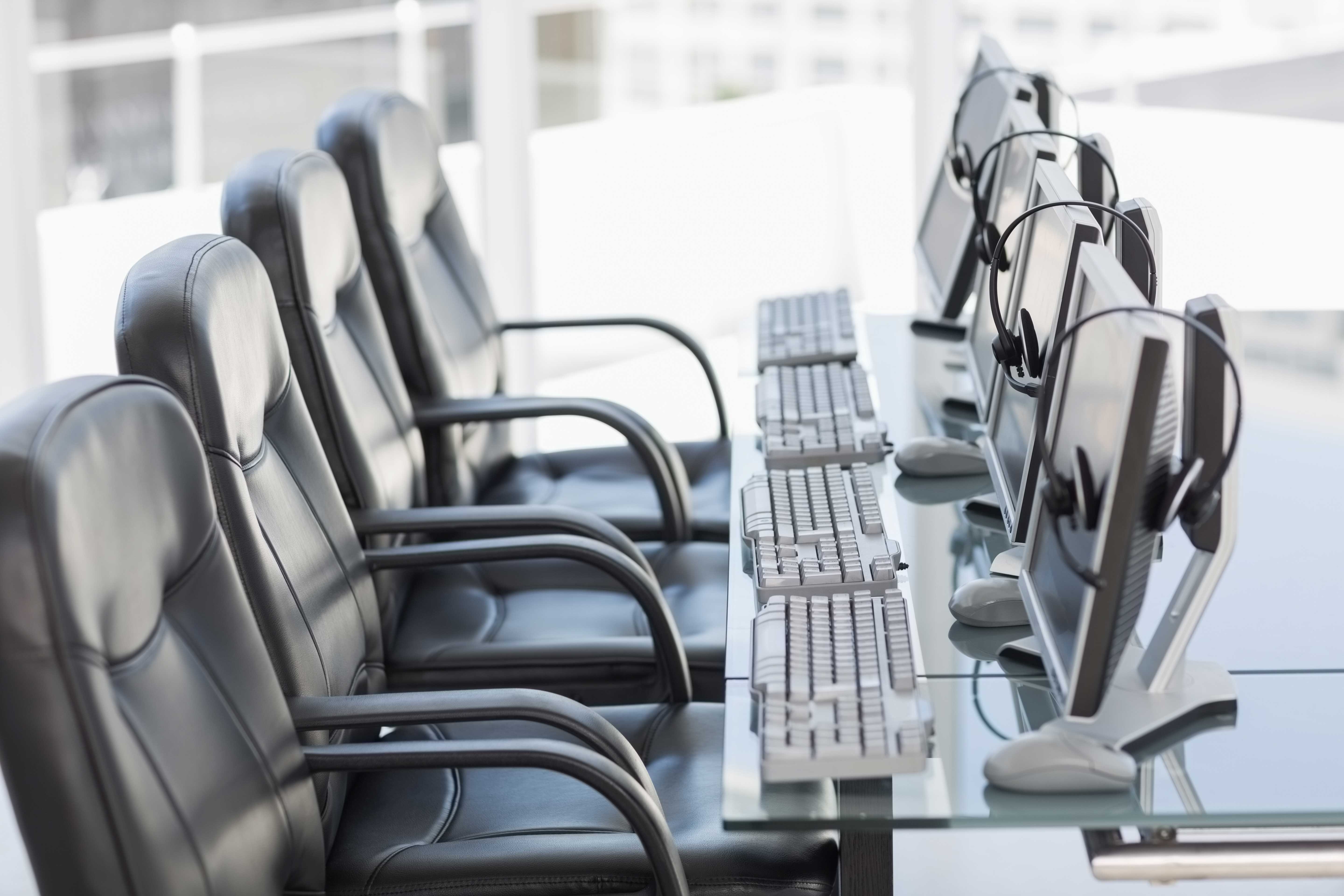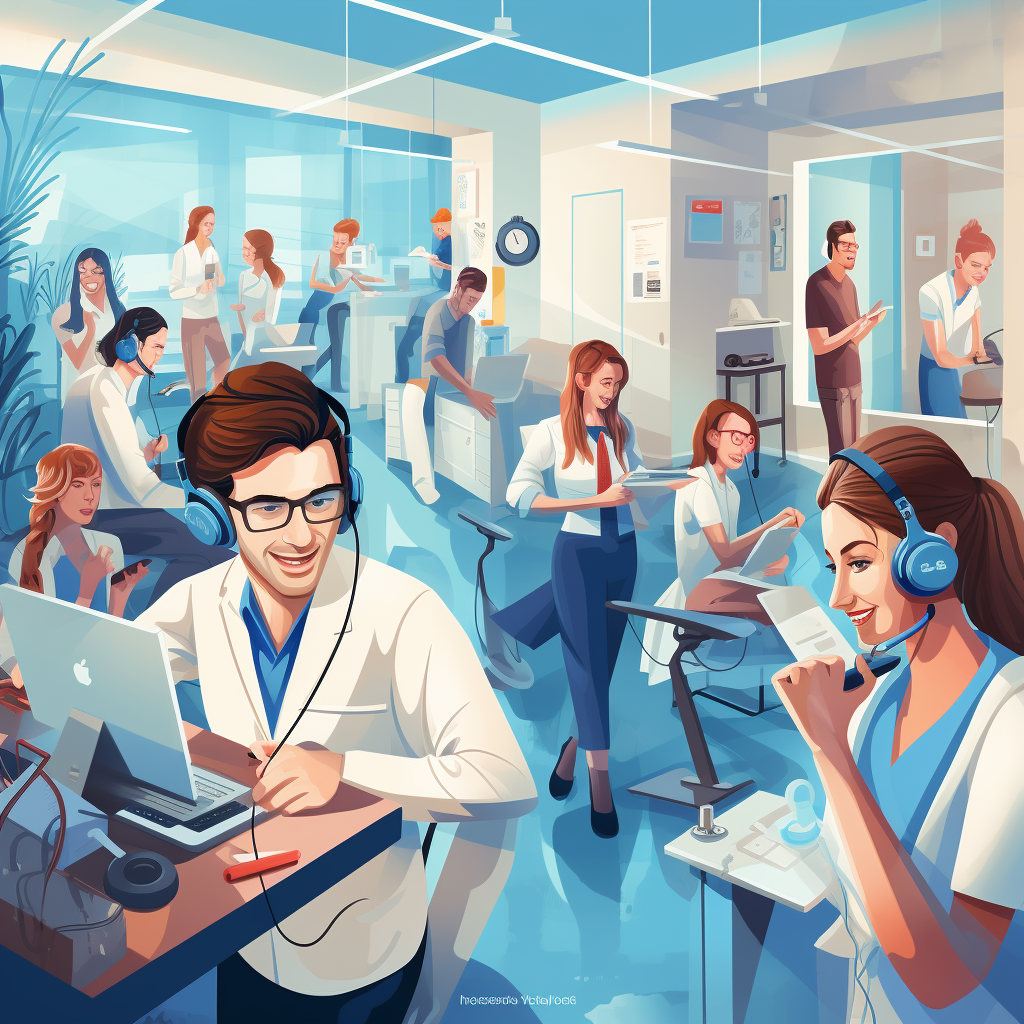
Why teletriage is uniquely difficult
Imagine being a triage nurse at the emergency department with a blindfold on, hands secured behind your back, and a nose plug in. Teletriage nurses must work with this absence of sensory tools every single day.
A teletriage nurse’s role is deeply cerebral. Teletriage is more intellectually demanding than is in-person nursing, because the only teletriage tool is the phone. Teletriage nurses must rely on their intellect, intuition, and imagination to assess patient acuity. Because they can’t see their patients, they must be able to create mental images of patients over the phone.
For some nurses, this creativity comes naturally. Other nurses must be trained in these cerebral techniques. It’s your organization’s responsibility to hire nurses who will excel in teletriage roles. Look for these attributes:
A highly-specialized skill set is IMPERATIVE for teletriage
When one sense is compromised, another sense is heightened. For teletriage nurses working in remote healthcare environments, this sense is hearing. More specifically, it is active listening. Active listening is the action of truly processing what the patient is saying. Active listening requires both empathy and concentration.
Telehealth practices vary, but active listening is a non-negotiable communication technique for any teletriage nurse at any organization. Active listening is essential for assessing patient acuity with a high-degree of accuracy and in a timely manner.
A successful teletriage nurse accurately assesses patients, employs critical thinking, and consistently directs patients to the appropriate level of care. Teletriage nurses must accomplish all of this in high-pressure, fast-paced, and rapidly-evolving telehealth environments such as call centers.
The ONE tool your organization needs for best-in-class teletriage
Many nurses find teletriage to be more difficult than in-person nursing. Which is why, to ensure patient safety and to enhance operational efficiency, your organization must make your teletriage nurses’ work as simple and desirable as possible. Ineffective and outdated teletriage processes drain resources and revenue, bloat handle times, and cripple patient satisfaction.
Your organization must give your telephone nurses both the training and technological tools they need to succeed. This includes decision support software, which helps guide nurses through their remote assessment process.
Equipping your teletriage nurses with decision support software, which has built-in HIPAA compliance, intelligent escalation procedures, and other patient safety mechanisms, ensures federal and state regulations are met at all times. Triage software also lifts a tremendous weight off of your nurses' shoulders by assisting them during patient calls.
Teletriage nurses equipped with call support software are not only better at their jobs; they are also happier and less likely to burnout and quit.
Why AI-automated teletriage is a crucial piece of the patient access puzzle
Building a strong and scalable patient access system requires creating an automated teletriage system—one characterized by reliable and logical processes. Automation of your telephone nurses’ workflows, with call support software, is essential to grow rapidly without hiring an army of new staff. Triage software empowers your organization to eliminate white noise, redundancies, & inefficiencies in your teletriage workflows.
The early days of remote nurse triage attempted to mimic the procedures of traditional in-office visits. But it was difficult to identify every possible scenario facing telephone nurses. As situations arose, clinics and call centers worked together to construct process flows that would guide the telephone triage nurse.
Identifying flaws and detours in the workflows of clinical and non-clinical staff—and crafting solutions that had minimal impact on the patient experience—while at the same time resolving issues as they arose—was a full-time job for teletriage teams.
Some sample teletriage workflows from the old days—which were not automated and digitized, but rather relied on binders and post-its—included:
- Non-established patient protocols.
- Critical lab results.
- Expired patient.
- Newborn birth report to pediatrician.
- Patient refusal to call 911 for priority symptoms.
- Parent insisting to speak to an on-call physician.
- Domestic, elder, and child abuse situation.
- Returning a call from the office.
Defining workflows and “process mapping” became even more vital as remote health services became more standardized. Standardization was and is met with resistance from many providers, who worry they will lose control of their individual preferences if their teletriage system is standardized via automation. There's often a lack of confidence from physicians and high-level executives—an attitude of “no one does things like we do”—that hampers or completely shuts down automation efforts.
This is why telehealth provider education is essential to ensure that everyone at your organization, from the physicians to the nurses to the support staff, are on board with the automation process. This is best accomplished by involving all impacted stakeholders in the workforce design exercises.
Why your teletriage nurses NEED AI-driven clinical guidance
Historically, triage nurses are generalists, meaning they care for all types of patients, all age groups, and all conditions.
As such, no telephone triage nurse knows every relevant assessment question for each symptom, nor should they be expected to know. Questions vary considerably from patient to patient depending on symptoms, age, and other factors. For instance, when a new mom calls with concerns about her 10-day-old baby’s umbilical cord drainage, versus when an elderly man calls complaining of a runny nose and congestion.
Decision support tools, embedded in triage software, help guide nurses to the appropriate assessment questions for each specific patient. Triage software ensures proper escalation and branching during each encounter.
Nurses are not expected to know everything, which is why decision support software is so critical. Nurses are owed the tools necessary to do their jobs. AI-powered triage software imbeds essential nursing protocols into teletriage nurses' workflows. They have guided clinical paths for each and every call. As such, AI-guided decision support is not only helpful for the nurse; it also satisfies the Standards of Care dictated by the American Association of Ambulatory Care Nurses (AAACN).
Press Ganey Associates, a healthcare industry polling agency, recently conducted a survey to measure employee satisfaction. The survey asked teletriage nurses: "Do you have the tools to do your job?” The resounding response: "No!”
Astute managers and human resource teams should pay close attention to these scores. They should figure out why staffers responded negatively. They should then pursue solutions.
Key areas for teletriage nurse judgment
Teletriage software helps nurses do their jobs; it doesn't do their jobs for them. To build a successful teletriage system, your nurses must be properly trained to handle the wide variety of situations that occur on a daily basis. For instance:
- A patient denies feeling short of breath, but the nurse can hear audible wheezing and an inability to speak in complete sentences.
- A mom calls three times in the same day about their child’s rash—and she seems extremely anxious.
- A patient calls and calmly reports constant abdominal pain that is severe and ongoing for the past five months.
Each of these examples require a specific response. Teletriage software helps guide the nurse to the correct response, but ultimately, the onus is on the nurse to determine the best course of action. Hence, you should train your nurses how to:
- Read between the lines.
- Actively listen to not only what is said, but also to what is not being said.
- Listen for whispering, cries, or voices in the background.
- Notice of an abrupt disconnection of the call.
- Awareness of if the patient is talking in disjointed phrases.
Nurses must establish trust and rapport with the patient. But there is only a 30-second window to do so. A therapeutic relationship fosters the exchange of essential information.
Tasks that should NOT be the responsibility of teletriage nurses
HIPAA regulations require patient identifiers for every interaction, both in-person and remote. Patients usually must provide their name and date of birth prior to care. Obtaining this information is a non-clinical task that should be performed by a UAP prior to triage. It shouldn't be the nurse's responsibility.
At almost every healthcare organization, insurance verification and authorization must be confirmed prior to treatment. This is also a clerical task that should be executed by administrative support staff—not nurses.
It's unprofessional for nurses to handle payment and insurance matters, and it cheapens their role. It's awkward for nurses to discuss financial issues with a patient, and can be perceived as a conflict of interest.
How to get buy-in from your WHOLE staff for the automation process
Building a highly efficient and durable teletriage system relies on a seasoned and well-supported implementation team who can allay anxiety, listen to concerns, and ask all staff members for their input on the changes in processes.
When automating teletriage processes, implementation teams should copy the playbook of other organizations who have successfully automated their teletriage operations. Understanding the why of automation is crucial.
In order to succeed and get buy-in from every staffer at your organization, your project teams should:
- Obtain and broadcast an endorsement from a high-level stakeholder, who makes it clear that automation is not an option—it's a requirement—and it therefore requires a united effort to make it work.
- Emphasize that the ultimate beneficiary of automation is patients, and that the needs of patients always come first.
- Explain that consistency promotes value-based care.
- Be realistic: Aim for a target of 80% automation and 20% customization. There may be specific workflows or populations that merit unique considerations.
Also, make abundantly clear to all employees that automation produces tremendous benefits for everyone, including them:
- Efficiency: Automation of complex teletriage processes improves key metrics. Handle times drop by 30-60%. Onboarding time drops by 66%.
- Reliability: Automated teletriage means every patient gets the same level of service, regardless of the caregiver, day/time, or location.
- Forecasting improves: An automated telehealth triage operation allows organizations to document and analyze key data, which can then be used to improve KPIs.
- Patient loyalty: When a teletriage system is automated, patients get better service, which boosts satisfaction scores.
- KPIs are clearly defined, shared, and enforced: The data documentation enabled by automation means staffers know exactly what their expectations and objectives are. The performance of your staff can be measured using these same KPIs.
- Scalability: By enhancing the efficiency of your staff, you can grow rapidly without hiring an army of new staff.
To create a cutting-edge telehealth platform, you must automate your teletriage processes
To optimize your patient access platform, you must automate your teletriage system. The easiest, fastest, and most effective way to automate your teletriage triage system is to equip your nurses with decision support software—and to thoroughly train your nurses in cerebral techniques such as active listening.
If your organization is also struggling with staffing problems, check out my blog: "Nursing Shortage Solutions: 14 Cures For The Nurse Staffing Crisis."
Posted By

Gina Tabone, MSN, has 25+ years of experience in telehealth. She has consulted for physicians, health systems, call centers, & other healthcare entities.
Related Post
November 19, 2024
heading into 2025, healthcare organizations face increasing pressure to digitize...
October 18, 2023
is your healthcare call center getting crushed under the weight of frustrated...



